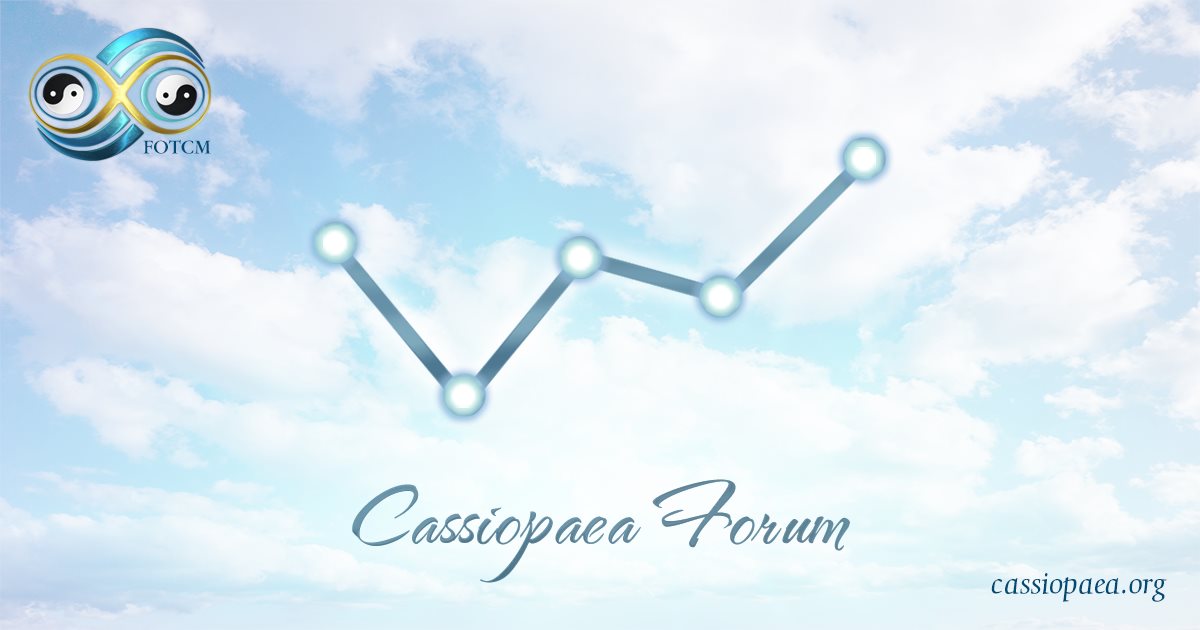Current "opinions" from past and contemporary monitors of Planet X touch many of the posts on this thread.
No fear, as the Cs said; It is the soul that counts.
Planet X: NASA’s Tracking, Future Trajectory, and Global Reactions
Jul 25, 2024
From Coast Insider Archives, enjoy a comprehensive show featuring various guests discussing Planet X: NASA’s tracking since 1982, future trajectory predictions, hidden celestial evidence, potential pole shifts, ocean rise fears, and global underground base preparations.

 cassiopaea.org
cassiopaea.org

 fireball.amsmeteors.org
fireball.amsmeteors.org
Ev Cochrane: Turquoise Sun – Prequel to Discovery | Thunderbolts
Apr 21, 2024
Saturday, Jul. 27, 2024
MAJOR FARSIDE SOLAR FLARE: The biggest flare of Solar Cycle 25 just exploded from the farside of the sun. X-ray detectors on Europe's Solar Orbiter (SolO) spacecraft registered an X14 category blast:
World's largest optical telescope takes shape
Jul 1, 2024

 www.bigislandvideonews.com
on Jul 26, 2024 at 12:10 pm
www.bigislandvideonews.com
on Jul 26, 2024 at 12:10 pm

 www.uaf.edu
July 10, 2024
www.uaf.edu
July 10, 2024
Park Fire emergency pop-up edition (07/26/2024)
Started streaming July 27 2024
The latest in a recurring series of live, virtual, & interactive "office hours" hosted by Dr. Daniel Swain on various topics related to extreme weather and climate.Park Fire emergency pop-up edition: The Park Fire in northeastern California is exhibiting extraordinarily rapid and extreme fire behavior. I will give some updates, including which communities might face risk overnight with little warning.
No fear, as the Cs said; It is the soul that counts.
Planet X: NASA’s Tracking, Future Trajectory, and Global Reactions
From Coast Insider Archives, enjoy a comprehensive show featuring various guests discussing Planet X: NASA’s tracking since 1982, future trajectory predictions, hidden celestial evidence, potential pole shifts, ocean rise fears, and global underground base preparations.

Session 24 June 2023
Session Date: June 24th 2023 Laura and Andromeda at the board Joe, Gaby, Ark, Possibility of Being, Niall, Chu, Scottie, Princess Leia, Falcor, Bella FOTCM Members participating via Zoom: 3DStudent, 987baz, A Jay, Adobe, Aeneas, Aiming, Alana, Alejo, anartist, AndrewMn, Andrian, annp...

American Meteor Society
We received 2 reports about a fireball seen over TN on Monday, July 22nd 2024 around 07:03 UT.
Ev Cochrane: Turquoise Sun – Prequel to Discovery | Thunderbolts
Apr 21, 2024
Second episode in the Turquoise Sun series. A prequel story of personal relationships and events which culminated into the recent book "The Case of the Turquoise Sun: A Natural History of Creation" written by Ev Cochrane.
In a series of collaborative articles in the mid-1980s, Dave Talbott and Ev presented evidence of Venus’s comet-like history, and its association with the Saturn-Venus-Mars polar configuration in prehistoric times—well before the events circa 1500 BCE as described by Immanuel Velikovsky in "Worlds in Collision" (1950).
A core principle of their research found primary mythological motifs reflected in ancient art such as Venus and the Eye of Horus—as described in Egyptian Pyramid Texts—rampaging about the sky in serpentine form and threatening the world with destruction.
A respected comparative mythologist, veteran Thunderbolts contributor Ev Cochrane is the author of Martian Metamorphoses (1997), The Many Faces of Venus (2001), Starf*cker (2006), On Fossil Gods and Forgotten Worlds (2010), and Phaethon (2017).
Saturday, Jul. 27, 2024
MAJOR FARSIDE SOLAR FLARE: The biggest flare of Solar Cycle 25 just exploded from the farside of the sun. X-ray detectors on Europe's Solar Orbiter (SolO) spacecraft registered an X14 category blast:
Solar Orbiter was over the farside of the sun when the explosion occured on July 23rd, in perfect position to observe a flare otherwise invisible from Earth.
"From the estimated GOES class, it was the largest flare so far," says Samuel Krucker of UC Berkeley. Krucker is the principal investigator for STIX, an X-ray telescope on SolO which can detect solar flares and classify them on the same scale as NOAA's GOES satellites. "Other large flares we've detected are from May 20, 2024 (X12) and July 17, 2023 (X10). All of these have come from the back side of the sun."
Meanwhile on the Earthside of the sun, the largest flare so far registered X8.9 on May 14, 2024. SolO has detected at least three larger farside explosions, which means our planet has been dodging a lot of bullets.
The X14 farside flare was indeed a major event. It hurled a massive CME into space, shown here in a coronagraph movie from the Solar and Heliospheric Observatory (SOHO):

The CME sprayed energetic particles all over the solar system. Earth itself was hit by 'hard' protons (E > 100 MeV) despite being on the opposite side of the sun.
"This is a big one--a 360 degree event," says George Ho of the Southwest Research Institute, principal investigator for one of the energetic particle detectors onboard SolO. "It also caused a high dosage at Mars."
SolO was squarely in the crosshairs of the CME, and on July 24th it experienced a direct hit. In a matter of minutes, particle counts jumped almost a thousand-fold as the spacecraft was peppered by a hail storm energetic ions and electrons.
"This is something we call an 'Energetic Storm Particle' (ESP) event," explains Ho. "It's when particles are locally accelerated in the CME's shock front [to energies higher than a typical solar radiation storm]. An ESP event around Earth in March 1989 caused the Great Quebec Blackout."
So that's what might have happened if the CME hit Earth instead of SolO. Maybe next time. The source of this blast will rotate around to face our planet a week to 10 days from now, so stay tuned
World's largest optical telescope takes shape
Jul 1, 2024
This drone footage shows ESO's Extremely Large Telescope taking shape in the Chilean Atacama Desert. We can see the insulating cladding being used to dress the dome and the white lattice structure at the centre — now almost complete — that will support the ELT’s 39-m primary mirror. Around the 1:30 mark, we can also see two arc-shaped tracks, currently protected with tan wooden plates, bracketing the white lattice. These tracks will allow the telescope to move in altitude. The grey beams at opposite sides of the lattice, seen more clearly at the 2:15 mark, will support the so-called Nasmyth platforms –– two tennis-court-sized areas where the scientific instruments will rest.

Kilauea Volcano Unrest Ends, Cracks Left On Chain Of Craters Road
HAWAIʻI VOLCANOES NATIONAL PARK - More than 1,500 earthquakes, including 30 earthquakes of magnitude-3 or greater, were detected during the upper East Rift Zone magma intrusion and unrest.
 www.bigislandvideonews.com
www.bigislandvideonews.com

In-person food preservation series planned in Palmer
Learn to preserve meat, fish, fruits and vegetables by canning using a pressure canner, pickling, and drying in a series of in-person workshops in Palmer.
Park Fire emergency pop-up edition (07/26/2024)
Started streaming July 27 2024
The latest in a recurring series of live, virtual, & interactive "office hours" hosted by Dr. Daniel Swain on various topics related to extreme weather and climate.Park Fire emergency pop-up edition: The Park Fire in northeastern California is exhibiting extraordinarily rapid and extreme fire behavior. I will give some updates, including which communities might face risk overnight with little warning.





